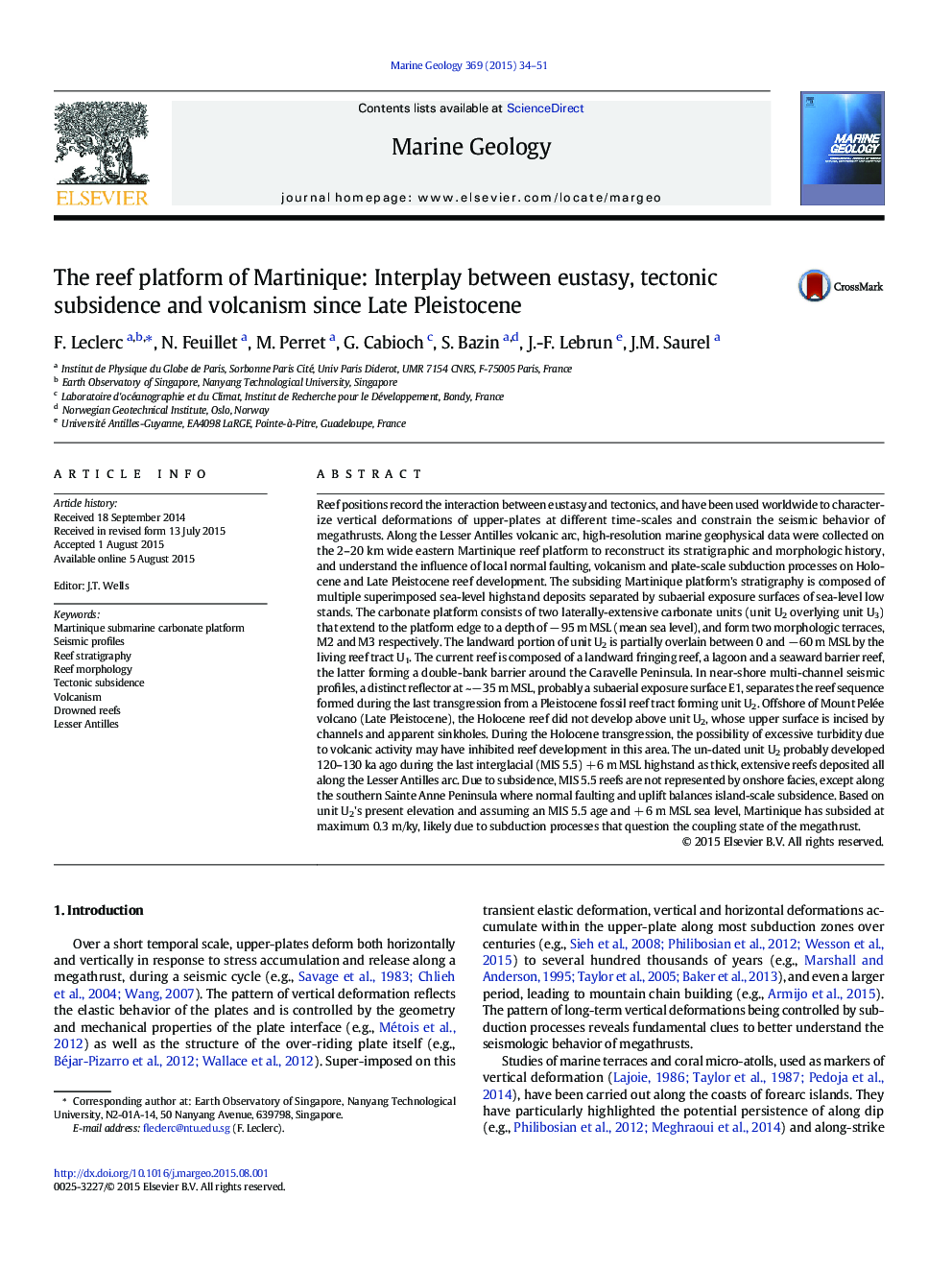| کد مقاله | کد نشریه | سال انتشار | مقاله انگلیسی | نسخه تمام متن |
|---|---|---|---|---|
| 4718174 | 1639083 | 2015 | 18 صفحه PDF | دانلود رایگان |

• The Martinique carbonate platform's tectonic context of growth is questioned.
• Offshore shelf stratigraphy consists of stacked late Pleistocene interglacial reefs.
• Normal faulting and volcanic activity influenced locally the platform morphology.
• The stratigraphy indicates a tectonic subsidence since at least 125 ka (≤ 0.3 m/ky).
• Long-term deformation of Martinique questions the megathrust seismic behavior.
Reef positions record the interaction between eustasy and tectonics, and have been used worldwide to characterize vertical deformations of upper-plates at different time-scales and constrain the seismic behavior of megathrusts. Along the Lesser Antilles volcanic arc, high-resolution marine geophysical data were collected on the 2–20 km wide eastern Martinique reef platform to reconstruct its stratigraphic and morphologic history, and understand the influence of local normal faulting, volcanism and plate-scale subduction processes on Holocene and Late Pleistocene reef development. The subsiding Martinique platform's stratigraphy is composed of multiple superimposed sea-level highstand deposits separated by subaerial exposure surfaces of sea-level low stands. The carbonate platform consists of two laterally-extensive carbonate units (unit U2 overlying unit U3) that extend to the platform edge to a depth of − 95 m MSL (mean sea level), and form two morphologic terraces, M2 and M3 respectively. The landward portion of unit U2 is partially overlain between 0 and − 60 m MSL by the living reef tract U1. The current reef is composed of a landward fringing reef, a lagoon and a seaward barrier reef, the latter forming a double-bank barrier around the Caravelle Peninsula. In near-shore multi-channel seismic profiles, a distinct reflector at ~− 35 m MSL, probably a subaerial exposure surface E1, separates the reef sequence formed during the last transgression from a Pleistocene fossil reef tract forming unit U2. Offshore of Mount Pelée volcano (Late Pleistocene), the Holocene reef did not develop above unit U2, whose upper surface is incised by channels and apparent sinkholes. During the Holocene transgression, the possibility of excessive turbidity due to volcanic activity may have inhibited reef development in this area. The un-dated unit U2 probably developed 120–130 ka ago during the last interglacial (MIS 5.5) + 6 m MSL highstand as thick, extensive reefs deposited all along the Lesser Antilles arc. Due to subsidence, MIS 5.5 reefs are not represented by onshore facies, except along the southern Sainte Anne Peninsula where normal faulting and uplift balances island-scale subsidence. Based on unit U2's present elevation and assuming an MIS 5.5 age and + 6 m MSL sea level, Martinique has subsided at maximum 0.3 m/ky, likely due to subduction processes that question the coupling state of the megathrust.
Journal: Marine Geology - Volume 369, 1 November 2015, Pages 34–51